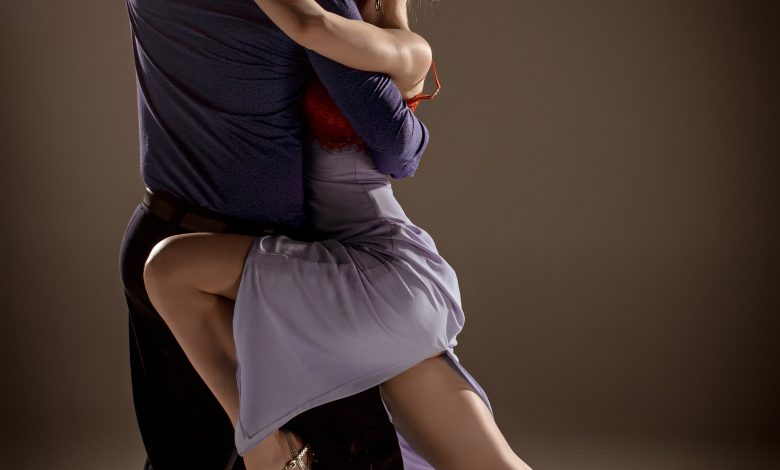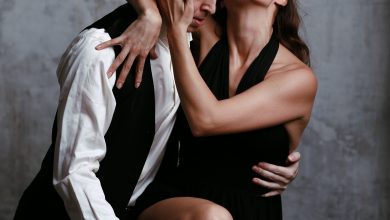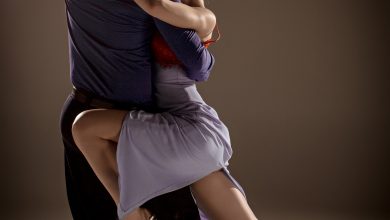Embellishments (or Adorno)

As in many dances most spectators focus on the follower – her elegance, grace, musical interpretation and technique. In Argentine Tango, the follower can add a variety of embellishments to enhance her dance style.
Embellishments (Adornos) are small movements of the foot, leg or body that Argentine Tango dancers work into the dance that do not perform a function, but instead embellish their steps to add a sense of style or to connect to the musicality of the song. Because the follower does not control the steps chosen by the leader, or the rhythm or direction of the dance, followers use embellishments to express their personality and enhance the musicality within the dance. Leaders are also able to perform embellishments to add style to their movements.
Here are some video examples of embellishments:
Cruzada to Parada with Embellishments
Embellishments for Men and Women
Embellishing the Ocho Cortado to Juan d’Arienzo.
Compact & Elegant Variations of Ocho Cortado
Pause & Lady’s Adornos
Here is a selection of well-known embellishments used in Argentine Tango:
Aguja (Needle)
The Aguja or Needle can be performed by the Leader as an embellishment during the Molinete. While the Follower performs the Molinete around the Leader in the traditional side-back-side-forward sequence, the Aguia or Needle embellishment is performed by the leader keeping his free foot vertical with the toe pointing at the floor with the knee bent, whilst pivoting.
Amague (Feint)
The word Amague in argentine tango derives from the spanish verb amagar which means to feint or to fake. Applied to Argentine Tango, an Amague is a step where one of the dance partners pretends to make a move in one direction, but then moves the other way. The Amague is most often used by leaders however followers can also do the amague.The Follower can use the Amague as an embellishment: for example, a tap with the crossed feet or the follower pretending to make a step with her free leg but then not actually making the step.
In this article you’ll find some great amagues executed by leaders.
The Leader’s typical amague is performed by feigning a step – a ‘fake move’. For example, when the leader takes a step to the side of the follower, but quickly retracts to the other side.
Amague Videos
Diego Blanco and Ana Pedron lesson on amagues:
Boleo (Whip)
The boleo is an embellishment caused by a ‘whip’ action initiated by the leader, executed when an ocho is quickly reversed in the middle of the ocho move. The leader’s whip action causes the follower’s free foot to be thrown to the side and wrap around her leg at the knee. It is considered an embellishment because the follower allows the pelvis to disassociate from the upper half of the body during the rotation, allowing the free leg to be thrown up and around in an eye catching flourish. The whipping action of the leg during a boleo is called the latigazo (lash).
There are multiple variations of the boleo. The first type of variation is a Back Boleo compared to a Forward Boleo:
Boleo Para Atras (Back Boleo)
The change in rotation results in the backward, swinging action of the free leg.
Boleo de Frente (Forward Boleo)
)
The change in rotation results in the free leg wrapping around the front of the supporting leg.
There are 5 types of boleos (Forward Circular Boleo, Back Circular Boleo, Forward Linear Boleo, Back Linear Boleo, and Side Linear Boleo). Circular Boleos involve sending the follower’s free leg to wrap around her supporting leg. Linear boleos involve sending the follower’s free leg in a linear direction either straight back, straight forward, or straight to the side.
How to Do a Boleo
Boleos
Caricia (Caress)
The Caricia or Caress is performed by the follower stroking or rubbing their foot against the leader’s leg, thigh, calf or foot. There are two variations of the Caricia: the Lustrada (or Polish) and the Castigada (or Seduction).
Lustrada (or Polish)
The lustrada is a quite sensual embellishment. It is performed by the follower caressing the free leg of the leader in an upward or downwards motion, or often one and then the other. The follower can caress any part of the leader’s leg or foot.
Pasada
Stepping over the leader’s foot in an elegant way. Depending on the follower’s preferences she can do variations such as lustrada; she can raise her leg high or keep it low.
Castigada (or Seduction)
The Castigada is performed by the follower lifting her free leg and caressing her own supporting leg. This Castigada may be an upward or downwards motion, and the follower can caress both the inside and outside of the supporting leg. It is frequently performed as an ocho embellishment and adds a delightful beautiful flourish to the ocho.
Cuatro (or Four)
The Cuatro or Four is performed by the follower by flicking the lower part of the free leg backwards and up, keeping the knees together.
Enroscar (or Screw)
The Enroscar or Screw is performed by the leader during the molinete. While the follower dances the molinete steps around the leader, the leader adds the Enroscar embellishment by keeping the free foot close behind the supporting foot while pivoting. A variation of this embellishment is the contra-enroscar. Here the leader’s free foot stays in front of the supporting foot during the pivot.
Lapiz (pencil)
Leader is pivoting with his leg extended and foot and toes pointing towards floor.
Planeo
Pivoting on one leg with the other leg stretched out.
Golpetico (or Tap)
The Golpecito or Tap is one of the simplest embellishments in argentine tango. The free foot does one or more taps as part of a step or during a pause. The golpecito can be executed by both lead and follower.
Toque (or Touch) Short touch of the leader’s instep by the follower’s foot.
Punto (or Point)
The Punto (or the Golpeo – the strike) is the most well known version of the golpecito. It consists of tapping the toe of the free foot on the floor. During a step or a pause the leader or follower may tap once or even twice.
Intrusion
The intrusión is performed by the leader briefly placing the free foot between the follower’s legs, often in the form of a ‘quick kick’, which requires very good timing. The intrusión is mostly performed by the lead, but sometimes by advanced followers.
Expressions of Emotion as an Embellishment
Expression of emotions such as raising hand by a follower and gently lowering it on partner’s shoulder; dancing with cheeks together.
Cheek to cheek
Expression of emotion – dancing with cheeks together.
Arm up and down
Raising hand by a follower and gently lowering it on partner’s shoulder.
You are mine
Gentle embrace.
Sweetheart embrace.
Forehead to forehead.
Rulo or Lapiz (Circle or Pencil)
The rulo or lapiz is performed by tracing a circle on the floor with the free leg, either as part of a step sequence or in a pause during a dance.
Both the leader and follower can perform this embellishment.
Sentada (Sitting)
The sentada is executed by the follower climbing onto, or appearing to climb onto, the leader’s supporting leg. It can be used as a beautiful embellishment at the end of a dance.



